“60% of search queries now end without a single click. Welcome to the zero-click era.”
We’re living through a silent revolution in how people discover information online. Search engines are no longer just directories of pages; they are now engines of answers powered by artificial intelligence, designed to predict, summarize, and deliver results instantly. This changes everything we know about visibility, rankings, and SEO.
This evolution might feel unsettling if you’ve spent years optimizing websites for Google’s search engine results pages (SERPs). In the past, climbing the SERP meant more clicks.
Today, however, even the top-ranked pages aren’t guaranteed traffic, because users get their answers directly from AI-powered engines without clicking through to a website.
This shift is driven by platforms like Google’s Search Generative Experience (SGE), ChatGPT with browsing mode, Perplexity AI, and Bing’s Copilot, which prioritize direct answers over blue links. The goal is no longer to simply “rank”; it’s to become the most relevant, trusted, and AI-friendly source for those answers.
That’s where Answer Engine Optimization (AEO) comes in.
Unlike traditional SEO, which focuses on optimizing content for keyword-based ranking in search results, AEO focuses on structuring and formatting your content so that it can be extracted, interpreted, and displayed directly by AI-driven engines.
This means writing with intent and clarity, integrating structured data, and ensuring your information aligns with semantic search models and entity recognition.
In other words, AI isn’t just enhancing search, it’s replacing parts of it. Brands that adapt early will gain visibility not through clicks but by becoming the featured source that generative search relies on.
This guide is your comprehensive roadmap to understanding, applying, and mastering AEO in 2025 and beyond. Whether you’re a content strategist, SEO professional, marketer, or founder, the future of search visibility will depend on your ability to become the best answer, not just another search result.
The Evolution of Search: Why SEO Alone Isn't Enough Anymore
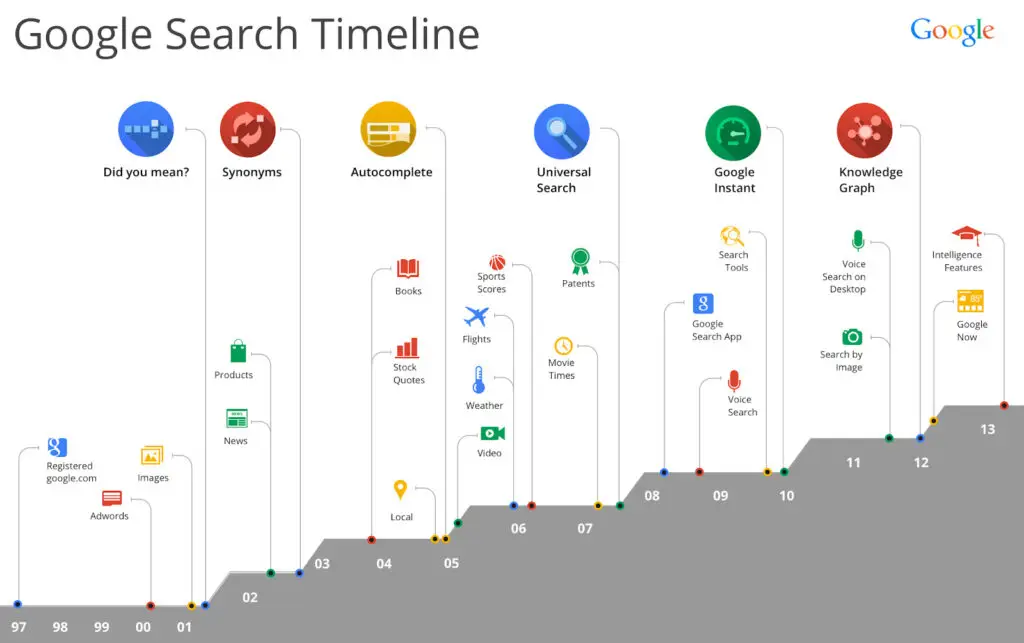
Search engine optimization (SEO) has evolved dramatically since the early 2000s. What began as a game of inserting the right keywords and building as many backlinks as possible has become a nuanced discipline grounded in search intent, user behavior, and machine learning.
In the early days, success meant stuffing pages with exact-match keywords and buying or trading backlinks. Google’s early ranking algorithm — PageRank — focused heavily on link volume, making it easy to manipulate the system.
But over the years, Google’s updates — Panda, Penguin, Hummingbird, and RankBrain — have gradually shifted focus toward content quality, relevance, and authority. Today, it’s not enough to have optimized metadata or strong backlinks. The algorithms are smarter, and the competition for attention is fiercer than ever.
The Rise of AI in Search: Meet BERT, MUM, and SGE
Search engines are no longer keyword matches — they are language processors.
Google’s BERT (Bidirectional Encoder Representations from Transformers) introduced accurate natural language understanding into search in 2019, allowing Google to interpret queries more like a human would. Then came MUM (Multitask Unified Model), which is 1,000x times more powerful than BERT, enabling Google to understand intent across languages, formats (text, video, image), and emotions.
In 2024–2025, we’ve entered the SGE (Search Generative Experience) era, where Google combines conversational AI with search, creating AI-generated summaries directly in SERPs.
These tools shift the SEO landscape dramatically because users no longer rely on ranking pages. They rely on AI to summarize the best information, and you’re invisible unless your content is structured for these models.
Zero-Click Behavior: When the Search Ends Before the Click
Perhaps the most disruptive trend is the rise of zero-click searches — when users get their answers directly on the search results page and never click through to a website.
According to the Search Behavior Trends Report included in The Impact of AI on Search Engines (2024) :
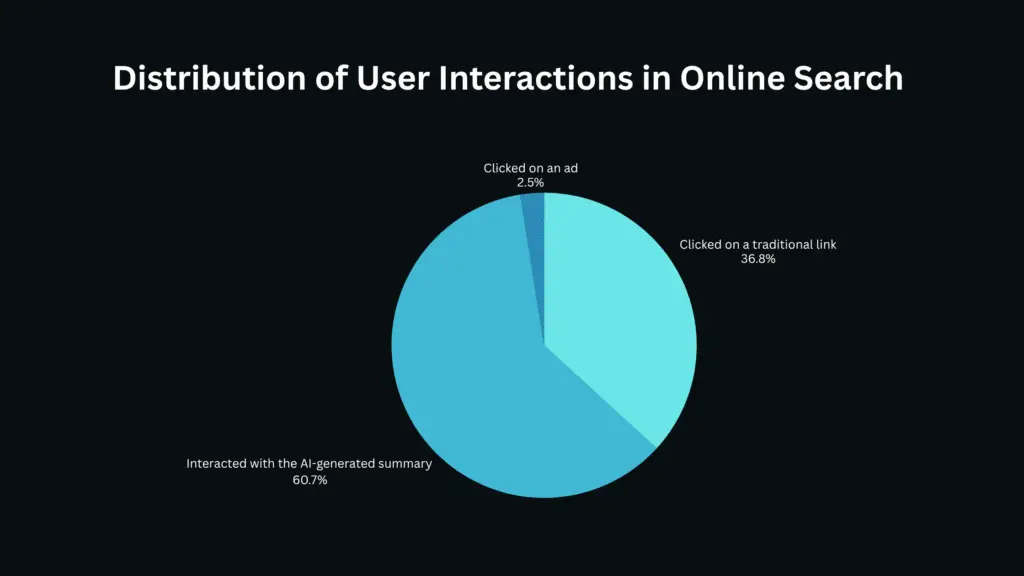
This indicates a significant shift: search engines are evolving into destination platforms, rather than merely navigational tools.
What this means for marketers and SEO professionals is critical but straightforward: ranking is no longer a guarantee of visibility.
You could rank #1 and still get zero clicks if an AI snippet answers the question above your content.
So, Why Isn't SEO Enough Anymore?
Because traditional SEO focuses on getting your link on the page.
Answer Engine Optimization (AEO) focuses on optimizing your content to appear in the search engine results.
In 2025, visibility is about being part of the AI response — whether it’s Google’s SGE, ChatGPT’s browsing results, or Perplexity AI’s citations.
That’s why AEO isn’t replacing SEO, it’s the next layer of it. You still need content and authority, but you must also structure, format, and deliver your information in a way that allows AI to interpret it easily.
What Is Answer Engine Optimization (AEO)?
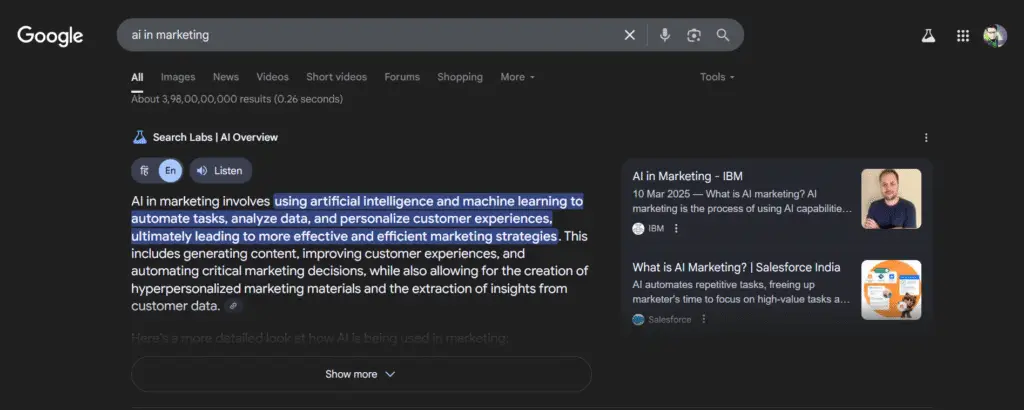
Answer Engine Optimization (AEO) is the process of optimizing your content so that AI-powered search engines and language models, like Google’s SGE (Search Generative Experience), Microsoft Copilot (via Bing), and ChatGPT, can understand, extract, and surface your content as instant answers to users.
Unlike traditional SEO, which focuses on ranking high in search results, AEO prioritizes being the direct source of information displayed to users in AI-generated answers, featured snippets, and voice search responses. This isn’t just about “ranking” anymore — it’s about becoming the answer itself.
Whether it’s an AI-generated summary, a voice assistant’s spoken reply, or a chat-based browser like Perplexity AI, discoverability rules have changed. To win visibility in this landscape, your content must be structured, semantically rich, and contextually complete — ready to be pulled, parsed, and presented instantly by AI.
According to recent industry insights:
AI answer engines are becoming the final destination for many queries, not a gateway.
How AEO Differs from Traditional SEO
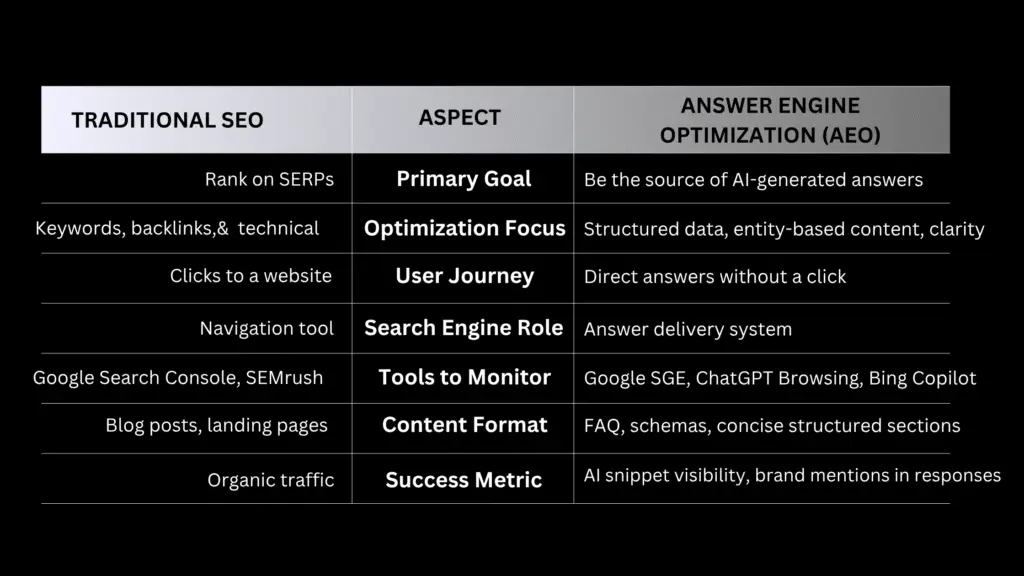
Reference: AgencyAnalytics – AEO Explained
Let’s explore the platforms reshaping the search experience
Meet the New Answer Engines: SGE, Copilot & ChatGPT
Let’s explore the platforms reshaping the search experience
Google SGE (Search Generative Experience)
Using AI and natural language models, SGE generates summaries and answers directly in the search results. It sources from top-ranking, semantically relevant content, but doesn’t always link to it unless needed.
📌 Tip: Your content must be schema-optimized, well-structured, and highly relevant to the query intent to appear in SGE.
Microsoft Copilot (Bing)
Copilot utilizes GPT-4, integrated with Bing, to deliver AI-driven search responses and citations. Unlike Google SGE, Copilot frequently links to source websites, offering a more transparent traffic path.
ChatGPT with Browsing Mode & Perplexity AI
These platforms enable users to ask questions in natural language and receive synthesized answers, often accompanied by citations. Optimizing for these engines means structuring your content to be machine-readable and contextually rich.
Why AEO Is Critical for Brand Visibility
In a zero-click world, traditional ranking alone doesn’t guarantee attention.
- You might rank #1, but get no clicks.
- You might rank #3, and still be the featured answer in SGE.
What matters now is being extracted by AI as a trusted source. That comes from Answer Engine Optimization, where you format your content so it’s ready to be featured, quoted, and cited in AI-powered search experiences.
AEO increases your brand’s top-of-funnel visibility and authority positioning — even when users never reach your site.
Key AEO Strategies You Should Start Using Now
Answer Engine Optimization (AEO) requires more than just publishing content — it demands structuring your knowledge so that AI can effectively understand, extract, and display it. Below are the five key strategies to help you rank in AI-powered search tools like Google SGE, Bing Copilot, and ChatGPT browsing.
1. Structured Data & Schema Markup
In the age of AI-driven search, structured data is no longer optional—it’s essential. Structured data enables search engines and AI tools, such as Google SGE and Bing Copilot, to better understand, categorize, and feature your content. It’s the backbone of Answer Engine Optimization (AEO), ensuring your information is machine-readable and positioned to be surfaced as a trusted answer.
What is Structured Data?
Structured data is metadata added to your webpage that helps search engines understand the context and relationships within your content. The most widely supported format is JSON-LD, a schema. org-compliant syntax recommended by Google.
Several key schema types are compelling for AEO:
- FAQPage: Marks up common questions and answers
- HowTo: Guides users through a step-by-step process
- Article: Helps define blog or editorial content
- Breadcrumb, Person, WebPage: Boosts clarity and trust signals
Why It Matters for AEO
Search engines like Google use structured data to populate rich results, including featured snippets, People Also Ask boxes, and even AI-generated summaries in SGE. Without this markup, your content may still get indexed, but it won’t be featured.
According to Google’s Developer Documentation, using structured data “enhances your presence in Search results and supports voice and AI-powered discovery.”
Real Example: FAQ Schema (JSON-LD)
<script type="application/ld+json">
{
"@context": "https://schema.org",
"@type": "FAQPage",
"mainEntity": [
{
"@type": "Question",
"name": "What is Answer Engine Optimization?",
"acceptedAnswer": {
"@type": "Answer",
"text": "Answer Engine Optimization is the process of optimizing content so it can be featured in AI-generated search responses."
}
}
]
}
</script>
Use tools like Google’s Rich Results Test or Schema Markup Validator to validate your implementation.
2. Entity-Based Optimization: Build Authority in an AI-Powered Search World
Traditional SEO focused on matching keywords. However, Answer Engine Optimization (AEO) demands something more structured and contextual: entities.
Entities are not just words — they are real-world, identifiable things like people, places, brands, or concepts that search engines can clearly understand and associate with other facts. Google utilizes entities to populate its Knowledge Graph, which powers AI-driven responses, including featured snippets, “People Also Ask” boxes, and Search Generative Experience (SGE) summaries.
What Is Entity-Based Optimization?
Entity-based optimization involves structuring content to represent and support known entities. This helps search engines categorize information and connect it to trusted knowledge sources.
For example:
- The word “Apple” could mean a fruit or a tech brand. However, when you add contextual clarity, like mentioning “iPhone” or “Tim Cook,” Google confidently understands the entity as Apple Inc.
Entity optimization isn’t just about semantic clarity—it’s about building a web of connections between topics, subtopics, and trusted sources. This helps AI models select your content as part of a reliable answer.
How to Build Entity Clarity
a. Create Topic Clusters
Create interlinked content hubs centered on your primary topic. For example, if your pillar topic is Answer Engine Optimization, supporting blogs might include:
- “AEO vs SEO: What’s the Difference?”
- “How Schema Helps with AEO”
- “Tools for Optimizing for Google SGE”
Each page should link back to the pillar and to each other, creating a strong semantic relationship.
b. Use Clear Headings and Contextual Terms
Include related terms and examples related to your primary topic. Avoid keyword stuffing and enrich your content by incorporating synonyms, industry-specific terms, and relevant supporting data to enhance its quality.
c. Reference Known Entities
Link to authoritative sources like:
These references help associate your content with existing, verified entities.
Why This Matters for AEO
AI models rely on entity recognition to synthesize accurate, context-rich answers. When your content matches known entities and is deeply interlinked, it becomes eligible for selection in AI-generated answers even when users never visit your site.
Map your essential services or content categories to known entities in Google’s ecosystem. Then, create blog clusters that surround each one with rich, interlinked content. This structure enhances semantic relevance and trustworthiness, which are crucial for achieving visibility in the AI-powered SERP 2025.
3. Featured Snippets & Rich Results: Your Shortcut to Answer Visibility
If Answer Engine Optimization (AEO) had a fast lane, it would be Featured Snippets and Rich Results. These special search features are among the top sources of AI-generated answers used in Google’s SGE, Bing’s Copilot, and even ChatGPT’s browsing mode.
Many zero-click searches begin and end with a snippet, and if your content powers it, you gain massive visibility, even without the user clicking through.
What Are Featured Snippets?
Featured Snippets are highlighted boxes at the top of Google’s search results that directly answer a query. They come in various formats:
- Paragraphs (definitions, summaries)
- Lists (steps, rankings, tips)
- Tables (comparisons, pricing)
- Videos (especially for “how-to” queries)
These are pulled from content that is well-written, well-structured, and trusted.
How to Optimize for Featured Snippets
To appear in a Featured Snippet, your content must be:
- Clear and concise (40–60 words for definitions)
- Properly formatted (use bullet points, numbered steps)
- Structured with H2s and H3s that match search questions
- Aligned with searcher intent
People Also Ask (PAA): Don’t Ignore This Goldmine
The People Also Ask section appears below Featured Snippets and expands into follow-up questions. These are a huge opportunity to rank for related queries and train AI models on your site’s depth.
Tip:
- Use question-style subheadings (e.g., “How does AEO affect SEO?”)
- Create FAQ sections at the end of posts and mark them with schema
Tools like AlsoAsked and AnswerThePublic help you find real PAA queries related to your topic.
In the AI-powered search ecosystem, getting featured once is like winning a mini SERP. Make your content skimmable, structured, and semantically complete, and you’ll become the preferred source for AI.
4. Conversational Content: Write for Humans, Optimize for AI
As AI transforms search engines into answer engines, writing content that mimics human conversation has never been more critical. Whether users are typing long-tail queries or speaking to a voice assistant, conversational content is now central to Answer Engine Optimization (AEO).
Gone are the days of robotic keyword stuffing. Today, your content must reflect how people ask questions — and how AI understands them.
Why Conversational Content Matters for AEO
AI-powered platforms like Google’s SGE, Bing’s Copilot, and ChatGPT, which rely on browsing, utilize natural language understanding (NLU) to determine the most relevant, human-like, and helpful answers.
They pull from sources that mirror how users speak and search.
💬 Think:
“How do I optimize for featured snippets?”
Instead of:
“featured snippet optimization SEO 2025.”
When your content sounds like the user’s query, it becomes a strong candidate for inclusion in AI-generated summaries, FAQs, and even voice search responses.
How to Create Conversational Content
Here’s how to optimize your writing for AEO using conversational best practices:
1. Use Question-Based Subheadings
Start sections with natural questions:
- ❌ Don’t: “Voice SEO and content”
- ✅ Do: “How does voice search affect content strategy?”
2. Answer Simply and Directly
Keep answers clear, with short sentences and natural transitions. Avoid jargon unless you define it clearly.
3. Use Tools Like ChatGPT & Jasper
AI writing tools help simulate how real users might phrase a question or interpret your content:
- ChatGPT → Ask it how users might frame a question
- Jasper → Generate headlines and FAQs in a natural tone
- Use SEMRush SEO Writing Assistant to check readability & tone
4. Write for Skimming and Listening
Use:
- H2s and H3s with full questions
- Short paragraphs
- Bold key points
- Listicles and how-tos
This makes your content scannable for search engines and natural for screen readers or voice assistants.
Bonus: Match Search Intent
Conversational content should not only sound natural but also align with the user’s search intent:
- Informational → “What is AEO?”
- Transactional → “Best tools to implement AEO.”
- Navigational → “AEO vs. traditional SEO comparison.”
Match the why behind the search, not just the words.
Run your draft through an AI assistant or read it aloud. If it sounds robotic or unnatural, rework it until it sounds like how you’d explain it in a conversation.
5. Visual & Multimodal Search Readiness: Preparing Content for the Next Generation of Discovery
Search is no longer just about text.
With tools like Google Lens and Pinterest Lens, and the evolution of Google’s Multimodal Unified Model (MUM), search is now multimodal — blending text, images, video, and voice to deliver answers across various formats.
To thrive in the AEO landscape, your content must be readable by humans and machines—whether it’s a product image, infographic, YouTube video, or voice snippet. That’s where Visual and multimodal Search Readiness comes in.
What Is Multimodal Search?
Multimodal search refers to the ability of search engines to understand and combine inputs from multiple formats. For example, a user uploads an image and types, “Show me similar products under ₹2000.”
Google’s MUM model can understand this combination of image, text, and context and return intelligent, conversational results. And it’s no longer science fiction—it’s happening now.
How to Optimize for Visual and Multimodal Search
1. Image Optimization
- Use descriptive file names (e.g., aeo-schema-example.jpg)
- Add alt text that describes the image’s purpose and topic
- Include image captions and context to help both users and search engines understand the meaning
- Ensure all images are mobile-friendly and compressed for fast loading
Example Alt Text:
<img decoding="async" src="aeo-infographic.jpg" alt="Answer Engine Optimization process flow with schema and snippet strategy" title="Answer Engine Optimization (AEO): The Future Beyond SEO">
2. Support Google Lens Discovery
Google Lens pulls images from websites with:
- High-quality visuals
- Clear object focus
- Descriptive metadata and schema (e.g.,
ImageObject markup)
Use this to your advantage, primarily if you work in:
- Ecommerce
- Travel
- Education
- Food
- Visual how-to content
3. Video Optimization for Multimodal Indexing
- Embed YouTube videos with SEO-friendly titles and transcripts
- Add VideoObject structured data
- Break long videos into chapters with descriptive timestamps
- Upload thumbnails with clear naming and branding
Videos are increasingly featured in traditional SERPs and SGE responses, especially for “how-to” or explainer topics.
Think beyond words: Add infographics, diagrams, video explainers, or carousels to your best content. Then, structure everything, including visuals, with the same SEO precision as your text.
The Rise of Zero-Click Searches: Risks and Opportunities
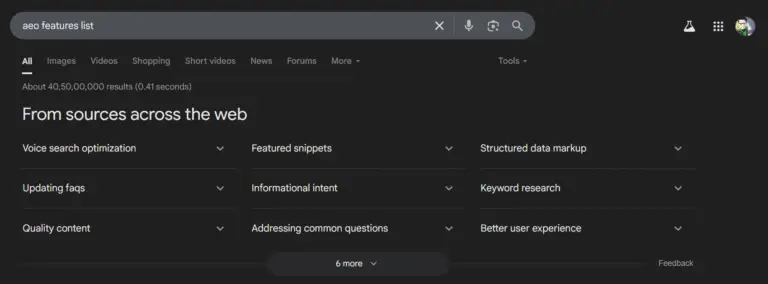
A zero-click search occurs when users obtain the information they need directly on the search results page without needing to click on a website link.
Thanks to AI-powered summaries, featured snippets, People Also Ask boxes, and knowledge panels, users are increasingly finding answers faster than ever and leaving without needing to click.
According to a 2023 SEMrush study, 57% of mobile and 48% of desktop searches result in zero clicks. Meanwhile, BrightEdge reports that over 60.7% of users now engage with AI-generated answers, particularly from Google’s Search Generative Experience (SGE).
This seismic shift in user behavior presents marketers, publishers, and SEO professionals with risks and opportunities.
The Risk: Declining Organic Traffic
For many marketers, zero-click searches mean fewer visits to your website, even if you rank #1.
A joint survey by Backlinko and Conductor revealed that 42.2% of marketers have seen a decline in organic traffic due to AI-driven search results and zero-click behavior.
Here’s why:
- Featured snippets answer the user’s query without needing to click.
- Google SGE creates detailed AI summaries from multiple sources.
- Chatbots like ChatGPT may reference your content, but they won’t always link back to it.
This leads to the unsettling reality:
High ranking, ≠ high traffic anymore.
The content you optimized for traffic may now be used to answer the query without a single visit to your site.
The Opportunity: Front-Row Brand Visibility
However, there’s a flip side, and it’s where Answer Engine Optimization (AEO) becomes powerful.
Zero-click doesn’t mean zero value. If your content is featured in the answer box, cited in SGE, or used in a voice assistant’s reply, you’re still winning — just in a new way.
Here’s how:
- Your brand name and source are mentioned at the top of the SERP.
- You build top-of-funnel awareness and perceived authority.
- Users often remember the brand even if they don’t click immediately, especially in B2B or research-heavy sectors.
In SGE, Google often cites trusted sites in its summaries. These mentions don’t always result in direct traffic, but they boost your E-E-A-T (Experience, Expertise, Authoritativeness, and Trustworthiness), which in turn influences future search visibility and clicks.
The Smart Strategy: Optimize for Both Clicks and Visibility
Here’s what marketers should do in the zero-click era:
1. Optimize for Featured Snippets
What It Does:
Improves your chances of appearing in AI-generated summaries, voice answers, and Google’s top-of-page featured boxes.
Explanation:
Featured snippets are short excerpts of content shown at the top of search results — above even the #1 organic listing. These are often pulled directly into Search Generative Experience (SGE) responses and voice assistant replies. To optimize for them:
Use question-based headings (e.g., “What is AEO?”)
Answer concisely (40–60 words) right below the heading
Use bullets or numbered lists where appropriate
Appearing in a snippet helps your brand own the answer space, even in zero-click scenarios.
2. Use FAQ & HowTo Schema
What It Does:
Triggers rich results like collapsible FAQs and step-by-step cards, increasing SERP real estate and AI visibility.
Explanation:
Structured data using FAQPage or HowTo schema helps Google and other engines understand the intent, structure, and utility of your content. Pages with schema are more likely to:
Appear in rich snippets
Be pulled into voice search results
Surface in AI responses
Using schema also aligns your content with machine-readable expectations in platforms like Bing Copilot and ChatGPT browsing mode.
3. Add Clear Branding to Content Snippets
What It Does:
Increases brand recall, even when the user doesn’t click your link — valuable in zero-click and SGE contexts.
Explanation:
With AI-generated answers, users may see your content without visiting your site. That’s why it’s important to:
Mention your brand name naturally in intros or footnotes
Use branded visuals in infographics and images
Structure FAQ answers to include subtle, non-spammy branding
This keeps your brand in the spotlight — even without the click.
4. Structure Data for AI Models
What It Does:
Ensures your content is easily parsed, extracted, and quoted by AI platforms like Google SGE, ChatGPT, and Perplexity.
Explanation:
AI doesn’t just index pages — it interprets semantic relationships between topics. To support this:
Use JSON-LD schema
Organize content into clearly labeled H2s/H3s
Use short, self-contained blocks of information
Also, build entity-based content clusters that align with Google’s Knowledge Graph and improve trustworthiness in AI pull-ins.
5. Track “Impression Value” in GA4
What It Does:
Even if clicks go down, it helps measure your brand’s search visibility and AEO effectiveness.
Explanation:
In a zero-click world, not all value is captured in sessions. You may be:
Getting mentioned in SGE
Powering voice assistant answers
Appearing in snippets — but not receiving the click
Set up custom dimensions or filters in GA4 and Google Search Console to:
Track Impressions on top pages
Monitor performance by Search Appearance > Rich Results
Tag zero-click snippets and measure their visibility over time
This gives you a holistic view of brand performance, beyond traffic.
While traditional SEO focuses on rankings and traffic, AEO prioritizes being chosen as the answer, which often means appearing without a click.
You’re not just competing for page one.
You’re competing to be the voice of the answer, the source AI pulls from, and the brand users associate with credible information.
“In a world of instant answers, your goal is to be the answer, not just another result.”
AEO in Action: Case Studies & Implementation Examples
Answer Engine Optimization (AEO) isn’t theoretical anymore — it’s already transforming how brands achieve visibility in AI-powered search experiences. From featured snippets to voice search results and Search Generative Experience (SGE) previews, companies are using AEO tactics to get ahead in a zero-click world.
Look at three real-world examples of brands and creators implementing AEO principles to drive visibility, even without traditional organic clicks.
Case 1: Backlinko Boosts Featured Snippet Visibility Using Schema
Brian Dean’s Backlinko is a gold-standard example of structured content optimized for snippets.
By implementing FAQPage schema, concise answers, and list-based formatting, many of Backlinko’s pages appear in Google’s featured snippets and voice search results. His blog posts’ on-page SEO holds a featured snippet and ranks for hundreds of variations due to clean formatting, concise introductions, and semantic headers.
Takeaway:
- Used JSON-LD schema
- Crafted snippet-friendly intros (40–60 words)
- Structured posts with H2/H3s matching real queries
Impact:
Backlinko directly answers many SEO-related searches, often outperforming bigger media publications.
Case 2: Ahrefs Blog Ranks for 10+ People Also Ask (PAA) Questions.
Ahrefs has optimized dozens of posts to dominate the People Also Ask (PAA) section. For example, their blog on SEO basics ranks for:
- “What is SEO and how does it work?”
- “What are the main types of SEO?”
- “What is the first step in SEO?”
- And more…
Their strategy?
- Use of question-based subheadings (e.g., “What is SEO?”)
- Short paragraph answers under each H2
- Strong internal linking to topical clusters
Impact:
Improved brand recall in the SERPs, increased snippet visibility, and stronger AI eligibility in SGE pull-ins.
Case 3: HelpScout Uses ChatGPT-Optimized FAQs to Rank in AI Summaries
HelpScout updated their FAQ sections to align with natural language queries, using tools like ChatGPT to simulate how users phrase real questions.
They added:
- Friendly, conversational answers
- Specific schema (FAQPage)
- Paragraphs formatted for featured snippets
Result:
Their posts began appearing in SGE summaries and voice assistant answers without requiring additional backlinks or technical SEO adjustments.
Impact:
More AI impressions, increased brand trust, and reduced dependency on keyword-driven content.
AEO Optimization Funnel
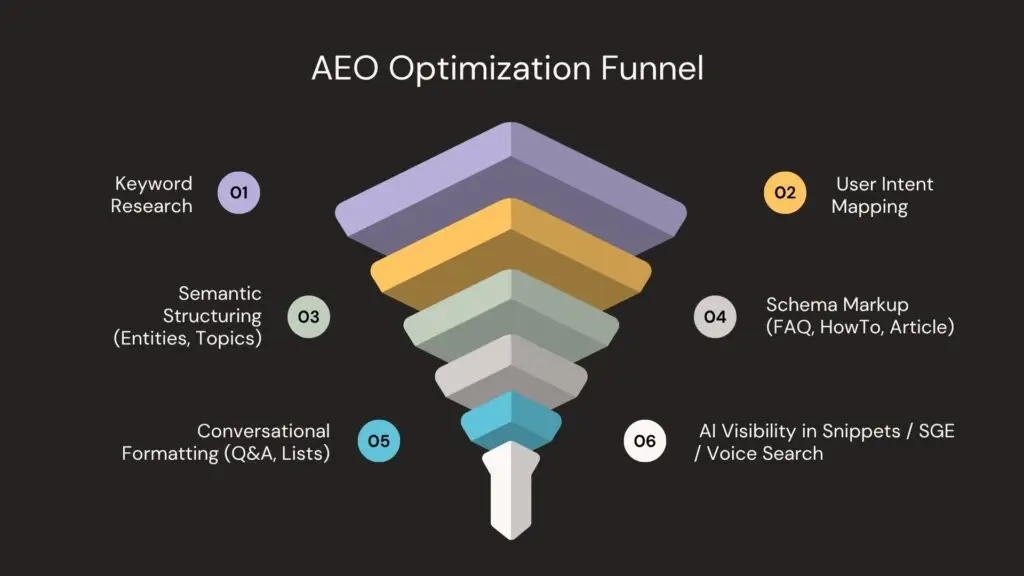
AEO isn’t about overhauling your content strategy—it’s about refining how you deliver value and structuring your expertise so search engines and AI can trust, extract, and amplify it.
Tools to Support AEO (Free & Paid)
Your AEO strategy is only as good as the tools you use to execute, monitor, and refine it.
Whether you’re optimizing schema markup, researching user intent, or testing snippet eligibility, the right stack of free and paid tools can streamline your process and improve visibility in AI-driven search results.
Here’s a breakdown of the most effective tools for Answer Engine Optimization in 2025 — and what to track with them.
1. Google Search Console (Free)
The most essential free tool for monitoring how your content performs in Google search.
How it supports AEO:
- Track search appearance features like “Rich results” and “FAQ snippets”
- Monitor click-through rates (CTR) on snippet-eligible queries
- Detect schema errors via the “Enhancements” tab
Use the “Performance → Pages” tab to see which pages get impressions but no clicks — a telltale sign of zero-click exposure.
2. Ahrefs or SEMrush (Paid)
These tools are gold standards for achieving SEO visibility and optimizing content for maximum impact. They support AEO indirectly by surfacing query trends and SERP features.
How they support AEO:
- Identify keywords that trigger featured snippets
- Analyze competitors who rank in “People Also Ask.”
- Discover long-tail queries ideal for FAQ-style content
3. Also Asked (Freemium)
This is a niche but powerful tool for AEO. It visualizes Google’s “People Also Ask” questions in a hierarchical map, showing how users naturally expand queries.
How it supports AEO:
- Uncover hidden FAQ opportunities
- Plan question-based content structures
- Group-related topics for internal linking
4. Schema Markup Generator (Free)
Whether you’re building FAQ, HowTo, or Article schemas, tools like Merkle’s Schema Generator or TechnicalSEO.com’s Schema Builder help you create valid, JSON-LD structured data.
How it supports AEO:
- Generate a compliant schema for immediate deployment
- Validate rich result eligibility with Google’s tools
5. ChatGPT or Jasper (Free & Paid)
AI tools like ChatGPT (by OpenAI) and Jasper AI help simulate natural language queries and generate content that feels human and conversational, which is critical for AEO and voice search optimization.
How they support AEO:
- Draft the FAQ sections that sound human
- Rewrite intros to be snippet-eligible
- Use AI prompts to generate variations of common user questions
What Metrics to Track for AEO Success
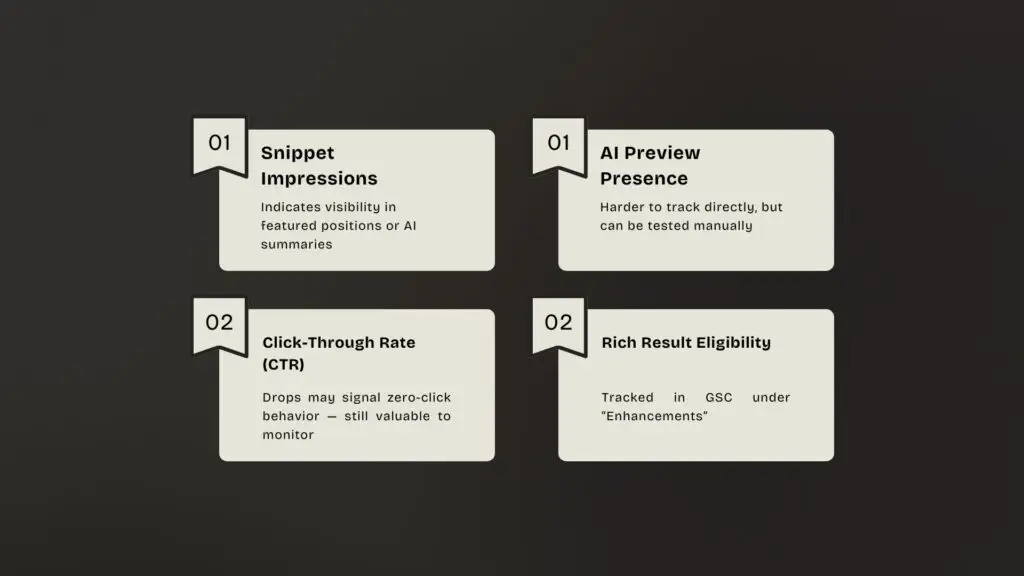
Create custom reports in Google Search Console or Looker Studio to measure snippet performance over time.
Common Myths & Mistakes About AEO (Answer Engine Optimization)
As AEO gains attention in 2025, so do misunderstandings. Many marketers are jumping into Answer Engine Optimization with assumptions that limit its potential, or worse, lead them to ignore it entirely.
Let’s break down the most common AEO myths, explain their truth, and show you what to do instead.
❌ Myth 1: “AEO Replaces SEO”
Reality:
AEO doesn’t replace SEO — it builds on top of it.
Traditional SEO focuses on making your site discoverable through rankings and link-building. AEO takes it a step further by ensuring your content gets extracted by AI tools like Google SGE, Bing Copilot, and ChatGPT as a reliable answer.
Think of SEO as getting on the page, and AEO as getting into the answer box.
What To Do Instead:
- Keep optimizing title tags, meta descriptions, and content for traditional SEO
- Layer on AEO practices: structured data, clear answer formatting, entity mapping
❌ Myth 2: “Only Big Brands Can Win Snippets”
Reality:
Google’s algorithms don’t reward brand size — they reward clarity, structure, and relevance. Many featured snippets originate from small blogs and niche websites that effectively structure their content to optimize for search engines.
For example, Backlinko, Ahrefs, and even niche bloggers often outrank giants like HubSpot or Forbes in featured snippets.
What To Do Instead:
- Use AlsoAsked to find real People Also Ask (PAA) questions
- Format content to directly answer those questions
- Use the FAQPage and HowTo schema to increase rich result eligibility
❌ Myth 3: “Schema Alone Is Enough”
Reality:
Schema markup is a foundational tool that won’t guarantee selection in AI-generated answers or snippets. Context, structure, and authority still matter. You must write like a teacher, not just tag like a developer.
AI engines look at the quality and clarity of the answer, not just the presence of markup.
What To Do Instead:
- Combine schema with answer-first formatting (e.g., 40–60 word summaries)
- Support content with internal linking to related entities
- Add authoritative external citations (e.g., Wikipedia, government sites)
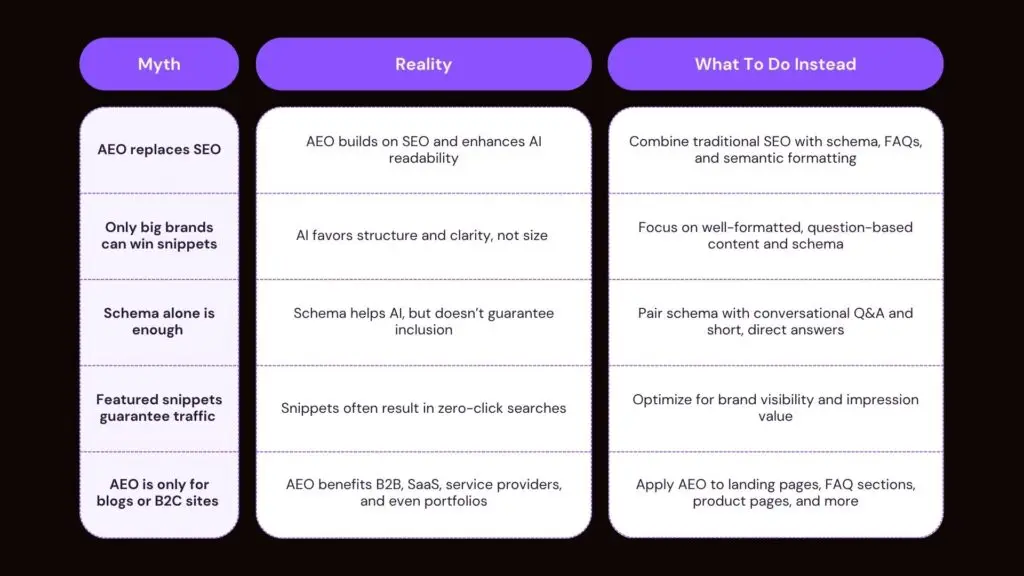
Bonus Mistake: Ignoring Zero-Click Search Impact
Many marketers still optimize only for clicks, not realizing that AI-generated answers now dominate the first screen.
Instead of resisting zero-click trends, use them to your advantage:
- Get your brand featured in answers
- Add internal CTAs in content that gets featured
- Use snippet impressions + branded queries as visibility KPIs
AEO isn’t a silver bullet or a trend to ignore. It’s a strategic evolution of search, and the marketers who embrace it with accurate understanding and practical execution will dominate AI-powered discovery in the years ahead.
Preparing for the Future: AEO and the Evolving Search Ecosystem
The search experience of the future is already here — and it’s increasingly multimodal, AI-driven, and expectation-rich. From voice assistants like Alexa and Google Assistant to image-powered platforms like Google Lens to conversational engines like SGE and ChatGPT, users no longer rely on blue links to discover information. They want instant, relevant, contextual answers.
Voice, Visual, and Multimodal Search
Google’s Multimodal Unified Model (MUM) was designed to understand inputs across various formats, including text, image, voice, and video, and deliver a unified intelligent response. This means your content can (and will) be interpreted in ways you may not have planned.
- Voice assistants prioritize natural language.
- Image search tools demand contextual metadata and alt text
- AI summarizers look for clarity, structure, and source trustworthiness
AEO-ready content must address all of these layers, not just keyword match.
The Role of Semantic SEO & E-E-A-T
Your site must adhere to semantic SEO principles to remain visible, focusing on topic relationships, entity clarity, and genuine user intent.
Combined with Google’s E-E-A-T guidelines (Experience, Expertise, Authoritativeness, Trustworthiness), the semantic structure ensures your content:
- Is machine-readable
- Is connected to known entities
- Reflects credibility and user-first value
ViralGraphs E-E-A-T Optimization Checklist reinforces that AI-powered engines will favor content rooted in human experience and evident expertise.
Content Teams Must Write for Both Humans and Machines
Tomorrow’s marketers must master the art of writing human-first content that’s also structured for machines:
- Concise intros for snippets
- Schema-enhanced FAQs
- Conversation-style content for NLP models
- Accurate citations and link integrity
The Ethical Side of AEO
With great AI visibility comes great responsibility.-
Ben Parker from Marketing (Spiderman reference)🤣
AEO raises critical ethical considerations:
- Data Ownership: Is Your Content Being Used Without Credit?
- Content originality: How do you compete with AI-generated answers built from your work?
- Transparency: Are AI platforms fairly attributing sources?
Being AEO-optimized also means advocating for content accountability, not just visibility.
AEO Is the New Front Page
The way users discover content is undergoing a fundamental change. They no longer rely solely on search engines as gateways; instead, they expect instant answers to be embedded directly into their search experience.
This shift from traditional SEO to Answer Engine Optimization encompasses more than visibility; it also involves relevance, trust, and structure.
“In a world where Google becomes the answer, you must become the best answer.”
AEO is not a trend. It’s the next evolution of digital visibility. And the brands that optimize for AI-powered search now will shape how users engage with information tomorrow.

Mayank Ranjan
Mayank Ranjan is a digital marketing strategist and content creator with a strong passion for writing and simplifying complex ideas. With 7+ years of experience, he blends AI-powered tools with smart content marketing strategies to help brands grow faster and smarter.
Known for turning ideas into actionable frameworks, Mayank writes about AI in marketing, content systems, and personal branding on his blog, ranjanmayank.in, where he empowers professionals and creators to build meaningful digital presence through words that work.








